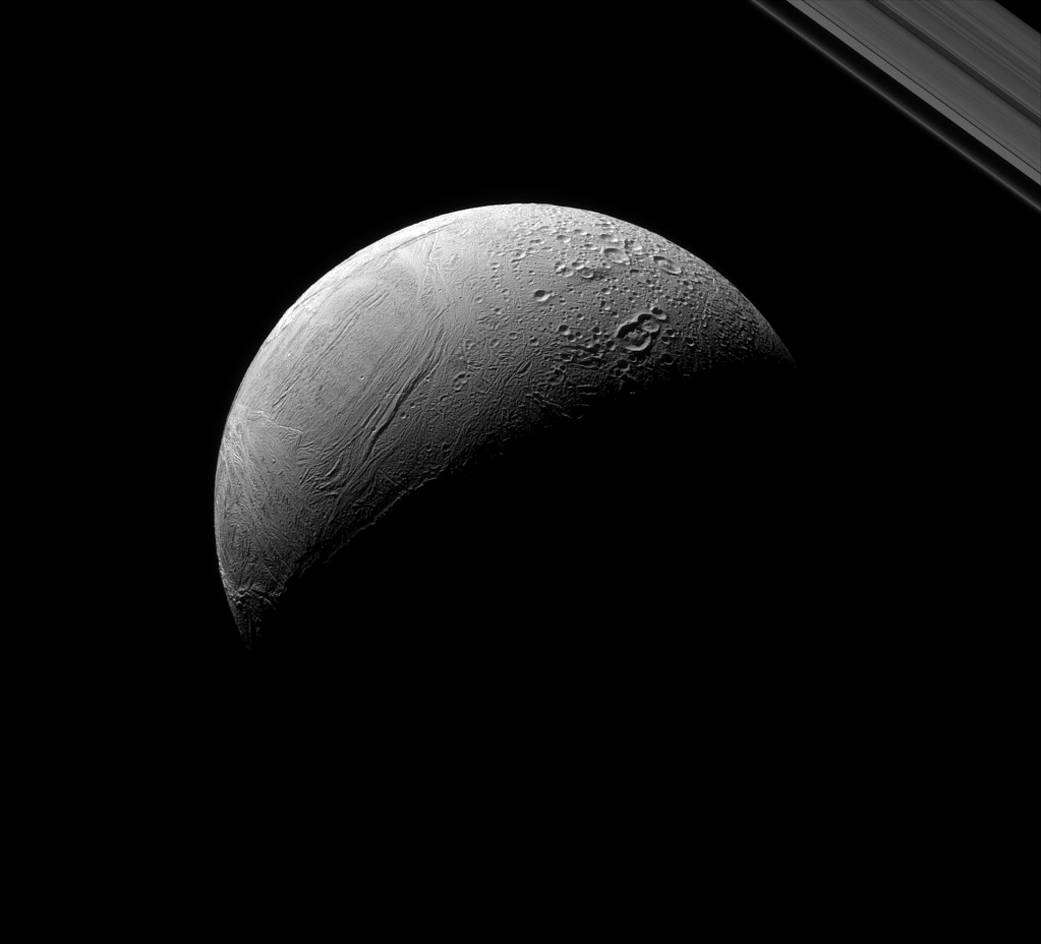
Enceladus dramatically displays the contrast between its older and newer terrain.
Newer surfaces (on the left in the image) will not have had time to accumulate craters. But as material sits exposed on the surface, impact scars build up, as in the more heavily cratered area on the top and right. Scientists can use this, along with estimates of how frequently impacts happen, to determine ages of surfaces of solid planets and of moons like Enceladus (313 miles or 504 kilometers across).
This view looks toward the anti-Saturn side of Enceladus. North on Enceladus is up and rotated 36 degrees to the right. The image was taken in green light with the Cassini spacecraft narrow-angle camera on Aug. 18, 2015.
The view was acquired at a distance of approximately 85,000 miles (137,000 kilometers) from Enceladus. Image scale is 2,680 feet (818 meters) per pixel.
The Cassini mission is a cooperative project of NASA, ESA (the European Space Agency) and the Italian Space Agency. The Jet Propulsion Laboratory, a division of the California Institute of Technology in Pasadena, manages the mission for NASA’s Science Mission Directorate, Washington. The Cassini orbiter and its two onboard cameras were designed, developed and assembled at JPL. The imaging operations center is based at the Space Science Institute in Boulder, Colorado.
For more information about the Cassini-Huygens mission visit http://saturn.jpl.nasa.gov or https://www.nasa.gov/cassini . The Cassini imaging team homepage is at http://ciclops.org .
Credit: NASA/JPL-Caltech/Space Science Institute























